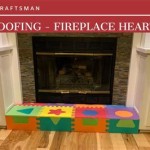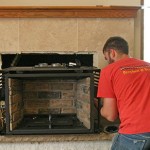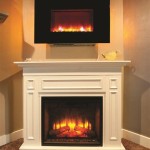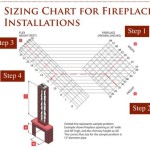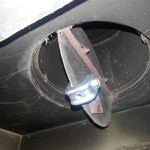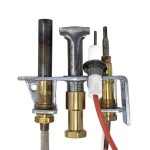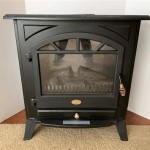Gas Fireplace Insert Insulation: Enhancing Efficiency and Safety
Gas fireplace inserts represent a popular and convenient heating solution for many homes. They offer a realistic flame appearance, controlled heat output, and relatively easy installation compared to traditional wood-burning fireplaces. However, the efficiency and safety of a gas fireplace insert can be significantly affected by the quality and implementation of its insulation. Proper insulation plays a crucial role in retaining heat within the living space, preventing heat loss to the surrounding structure, and ensuring the safe operation of the unit.
The primary function of a gas fireplace insert is to generate heat and distribute it effectively into the room. Without adequate insulation, a substantial portion of this heat can escape through the fireplace cavity, chimney, and surrounding walls. This heat loss translates directly into reduced heating efficiency, higher energy bills, and a compromised ability to maintain a comfortable temperature within the home. Furthermore, insufficient insulation can lead to overheating of adjacent combustible materials, potentially creating a fire hazard. The selection and installation of appropriate insulation materials are thus paramount for maximizing the benefits and minimizing the risks associated with gas fireplace inserts.
This article will explore the principles of gas fireplace insert insulation, highlighting the importance of proper materials, installation techniques, and safety considerations. Understanding these aspects is essential for homeowners and installers alike to ensure optimal performance and safe operation of these appliances.
The Importance of Insulation for Gas Fireplace Inserts
The need for insulation around a gas fireplace insert stems from several factors related to heat transfer and safety. A properly insulated unit will operate more efficiently, maintain a consistent temperature, and reduce the risk of potential hazards.
First and foremost, insulation minimizes heat loss. Gas fireplace inserts generate heat through the combustion of natural gas or propane. This heat is intended to warm the living space. However, without adequate insulation, a significant portion of the heat radiates outwards, not into the room but into the surrounding structure of the fireplace cavity and chimney. This lost heat represents wasted energy and increased heating costs. Insulation acts as a barrier, impeding the flow of heat and redirecting it towards the intended target: the living area. By retaining heat within the unit and directing it outwards, insulation improves the overall heating efficiency of the gas fireplace insert. This directly translates to lower energy consumption and reduced heating bills, making the investment in proper insulation a financially sound decision in the long run.
Secondly, insulation helps maintain a more consistent and comfortable temperature within the room. Without insulation, the heat output of the gas fireplace insert can fluctuate more dramatically. As the unit cycles on and off, the temperature in the room may rise and fall noticeably, creating an uncomfortable environment. Insulation helps to stabilize the temperature by buffering against these fluctuations. It reduces the rate at which heat is lost when the unit is off and helps to maintain a more consistent level of warmth. This improved temperature regulation enhances the overall comfort and livability of the space.
Finally, and perhaps most critically, insulation plays a vital role in ensuring the safe operation of the gas fireplace insert. The high temperatures generated by the unit can pose a fire hazard if they are allowed to come into direct contact with combustible materials such as wood framing, drywall, or insulation. Insulation creates a thermal barrier between the heat source and these materials, preventing them from reaching their ignition point. This significantly reduces the risk of fire and protects the structural integrity of the surrounding area. Furthermore, proper insulation can also help to prevent the formation of condensation within the chimney, which can lead to corrosion and deterioration of the structure over time. By mitigating these risks, insulation contributes to the long-term safety and reliability of the gas fireplace insert.
Types of Insulation Materials for Gas Fireplace Inserts
Selecting the appropriate insulation material is a crucial step in ensuring the effectiveness and safety of a gas fireplace insert installation. Different materials possess varying thermal resistance properties, fire resistance ratings, and installation requirements. Choosing the right material depends on the specific installation conditions, local building codes, and the manufacturer's recommendations.
One of the most common and effective insulation materials for gas fireplace inserts is mineral wool. Mineral wool, which includes rock wool and slag wool, is a fibrous material manufactured from molten rock or slag. It boasts excellent thermal resistance, effectively reducing heat transfer. Critically, mineral wool is non-combustible, meaning it will not burn or contribute to the spread of fire. This makes it a particularly safe choice for insulating areas around high-temperature appliances. Mineral wool is also relatively easy to install, typically available in batts or rolls that can be cut and fitted to the contours of the fireplace cavity. It is resistant to moisture and mold growth, further enhancing its durability and longevity.
Ceramic fiber insulation is another popular option for gas fireplace inserts. Ceramic fiber is a lightweight, high-temperature insulation material made from alumina-silica fibers. It offers exceptional thermal resistance and can withstand extremely high temperatures without degrading. Ceramic fiber blankets or boards are often used in direct contact with the firebox of the gas fireplace insert to provide maximum protection against heat transfer. Like mineral wool, ceramic fiber is non-combustible, making it a safe choice for high-heat applications. However, it is important to handle ceramic fiber with care, as the fibers can be irritating to the skin and respiratory system. Wearing appropriate protective gear, such as gloves and a mask, is recommended during installation.
Refractory cement, also known as fire cement, is a heat-resistant mortar used to seal gaps and joints in fireplace structures. While not a primary insulation material, refractory cement plays an important role in creating an airtight seal around the gas fireplace insert. This prevents the escape of hot gases and helps to improve the overall efficiency of the unit. Refractory cement is particularly useful for filling cracks and voids in the firebox, chimney, or surrounding masonry. It is designed to withstand high temperatures without cracking or crumbling, ensuring a durable and long-lasting seal. Applying a thin, even layer of refractory cement to all joints and seams is crucial for maximizing its effectiveness.
It is important to note that conventional fiberglass insulation is generally not recommended for use around gas fireplace inserts. Fiberglass insulation has a lower thermal resistance compared to mineral wool or ceramic fiber, and it can also be combustible under certain conditions. Using fiberglass insulation near a gas fireplace insert can pose a fire hazard and compromise the overall safety of the installation. Always consult the manufacturer's instructions and local building codes to determine the appropriate insulation materials for your specific gas fireplace insert. Using the correct materials and following proper installation procedures is essential for ensuring the safe and efficient operation of the unit.
Proper Installation Techniques for Gas Fireplace Insert Insulation
The effectiveness of gas fireplace insert insulation depends not only on the choice of material but also on the quality of the installation. Incorrect installation can compromise the insulation's ability to prevent heat loss and protect against fire hazards. Adhering to best practices and following manufacturer guidelines are paramount for achieving optimal results.
Before beginning the installation process, it is crucial to thoroughly prepare the fireplace cavity. This involves inspecting the area for any existing damage, such as cracks or crumbling masonry. Repairing these defects before installing insulation is essential for ensuring a solid and stable foundation. Clean the inside of the fireplace cavity and chimney to remove any debris, soot, or loose materials. This will create a clean surface for the insulation to adhere to and prevent any potential fire hazards. Finally, carefully measure the dimensions of the fireplace cavity to determine the amount of insulation material needed.
When installing mineral wool or ceramic fiber insulation, ensure that it is properly fitted to the contours of the fireplace cavity. Cut the insulation batts or rolls to the appropriate size and shape, paying close attention to any corners or edges. Overlap the insulation pieces slightly to create a continuous thermal barrier. Secure the insulation in place using mechanical fasteners, such as staples or wire mesh, if necessary. Avoid compressing the insulation excessively, as this can reduce its thermal resistance. The goal is to create a snug but not overly tight fit, allowing the insulation to effectively trap air and minimize heat transfer.
Pay particular attention to insulating around the flue connector and any other areas where the gas fireplace insert comes into contact with combustible materials. These areas are particularly susceptible to heat transfer and require extra protection. Wrap the flue connector with multiple layers of insulation and secure it in place with high-temperature tape or wire. Ensure that there is adequate clearance between the gas fireplace insert and any combustible materials, as specified by the manufacturer's instructions and local building codes. This clearance is crucial for preventing overheating and fire hazards.
After the insulation is installed, carefully inspect the area to ensure that there are no gaps or voids. Seal any remaining cracks or openings with refractory cement to create an airtight seal. This will prevent the escape of hot gases and further improve the efficiency of the gas fireplace insert. Double-check all connections and fasteners to ensure that they are secure. Finally, test the gas fireplace insert to verify that it is operating properly and that there are no signs of overheating or smoke leakage. Regular inspection and maintenance of the insulation are essential for ensuring its continued effectiveness and safety. Following these guidelines will help to ensure that your gas fireplace insert is properly insulated, providing years of efficient and safe heating.

Walls Behind Fireplaces Building America Solution Center
Insulation Around A Fireplace Insert Hearth Com Forums Home

Rutland 10 Ft X 1 2 In Fiberglass Fireplace Insert Insulation 105 The Home Depot

Electric Fireplace Insulation An Ultimate Guide Inserts Guy

Build Or Remodel Your Own House Fireplace Problems Parts Inserts Prefab
Finally Got Around To Insulating My Fireplace Hearth Com Forums Home

Walls Behind Fireplaces Building America Solution Center

How To Insulate A Fireplace Insulation Cover

Rutland 10 Ft X 1 2 In Fiberglass Fireplace Insert Insulation 105 The Home Depot
Gas Fireplace Venting Explained Heat Glo
Related Posts

